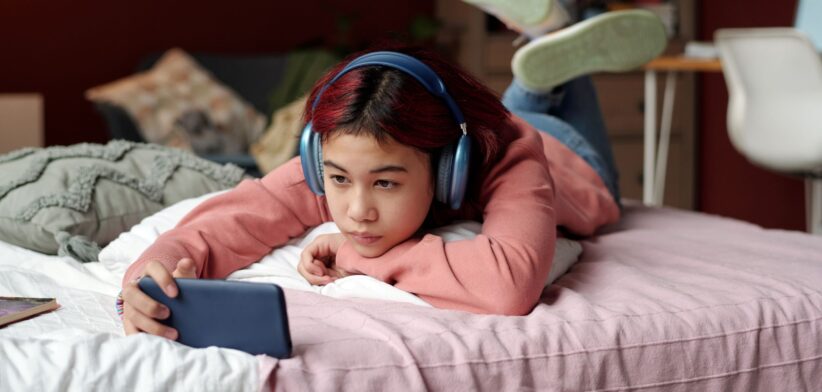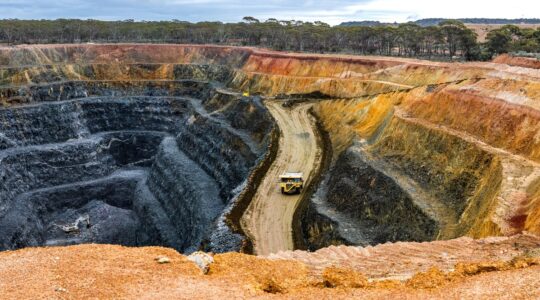The Federal Government has confirmed video-sharing platform YouTube will be included in the upcoming social media ban for children aged 16 and under.
In recent days, the platform, owned by Google, attempted to persuade the Government to remain excluded from the upcoming ban. The restrictions are due to come into force in December this year.
Last month, eSafety Commissioner Julie Inman Grant advised the Government to remove the proposed exemption on YouTube from the upcoming ban. She cited YouTube’s “persuasive design” and algorithmic recommendations that keep young people scrolling.
YouTube has argued it is “not a social media service” and “offers benefit and value to younger Australians”.
Has the Government made the right decision? Five experts have had their say on if YouTube should be included. Four out of five said no, but all expressed broader concerns about the ban. Here are their detailed answers.
Catherine Jane Archer, Senior Lecturer Communication, Edith Cowan University:
No
I don’t support the move to ban YouTube for those under 16. Having said that, I also don’t support the “blanket” ban on social media aimed at under 16s, given the implications for young people’s freedom to access information.
However, I do believe the Government’s move has led to more discussion around children’s rights, their safety, and our responsibility to them in the digital world. Perhaps social media companies may make their apps safer and take more seriously their social licence to operate as a result.
Using the United Nations’ framework for children’s human rights, children should be protected from harm. Proponents argue that a ban would protect children, as YouTube is the most popular children’s platform. But under the UN framework, children also have the right to participation, including on the internet, and this is where the ban is flawed.
YouTube is a main source of education and entertainment for young people and a window to the world – for good and bad.
Following her recent Press Club speech, eSafety Commissioner Julie Inman Grant sought to clarify that she was referring to YouTube accounts for children, and not general “logged-out” access to YouTube.
However, the ban would mean younger people won’t be able have an account where they can create content, put forward their own views, or comment.
Effectively, young people would be cut off from a huge creative outlet, and from social and political commentary. Getting the balance right isn’t easy – a 15-year-old and a 5-year-old would both be subject to this ban.
As someone who has studied “kidfluencers” – children who are social media influencers – I have advocated for protections for kids creating content. However, these protections, particularly for younger children working for brands and with their parents as managers, should relate to their working conditions. They should not come at the cost of freedom to interact and have a voice.
Catherine Page Jeffery, Lecturer in Media and Communications, University of Sydney:
No
YouTube plays an important role in the digital lives of teens. It’s a source of information, entertainment, education and community.
Unlike other sites included in the minimum age legislation, YouTube is not designed to be a social network. Users most commonly watch videos on the site, as they would on streaming platforms.
That’s not to say YouTube doesn’t present risks, including potentially harmful content such as that espousing misogynistic, racist and hateful views, distressing material and sexually explicit content which the platform may recommend to young people.
However, rather than restricting access to YouTube and indeed all social media sites for young people, we need to understand young people’s perspectives, practices and concerns, and work with them to develop the skills to safely navigate these spaces.
The debate over which platforms should be included or excluded from the ban raises a larger issue with the legislation overall. Different social media platforms present different opportunities and risks, and young people engage with these platforms in different ways. There are many platforms young people use for social connection that are not currently included in the legislation.
It’s possible many young people will flock to other, less regulated sites if they are excluded from apps such as TikTok and Instagram. This may present further risks to young people.
Faith Gordon, Associate Professor in Law, Australian National University:
No
YouTube should not be included in Australia’s social media ban for under-16s.
Banning young people from these platforms risks cutting them off from vital sources of connection, creativity, learning and support – especially for those who already feel marginalised in their offline lives. In my research with young people, LGBTQI+ participants often described the online world as their only place of belonging.
Of course, these platforms are not without harm. Young people have been clear: they are tired of and negatively impacted by “toxic” content pushed by algorithms, the “violent” videos they can’t unsee, and the silence they face when reporting abuse or harm to platforms.
We all agree that urgent action is needed to make the digital world safer for children and young people – but the answer is not to ban them from it entirely.
Instead of blanket bans, we need smart, effective, targeted solutions: stronger regulation, better moderation, transparency around algorithms, and real accountability from platforms. This would better protect young users while also respecting their rights.
Joanne Orlando, Researcher, Digital Wellbeing, Western Sydney University:
No
The Government’s narrow definition of social media for this ban means YouTube is not defined as social media because its “sole purpose” isn’t enabling online social interaction between users.
This sits in direct opposition to the government’s own research undertaken by eSafety Commissioner in 2024 to understand social media use by young Australians. That research found YouTube was the most popular social media app used by children aged 8–15 years.
A glaring gap in this definition is that it ignores how children actually engage with social apps. For many apps children use, social interaction is key and sits closely alongside another activities, such as gaming.
YouTube may not fit the ban’s particular definition. However, its algorithmic recommendations, endless scrolling, and unmoderated comment sections pose the same risks as any official social media app. Similarly, many gaming sites and messenger apps do as well – yet escape this particular ban.
There are red flags everywhere.
Instead of arbitrarily banning platforms while ignoring others with identical harmful features, we should target the real problem – the design elements that exploit young users. Disable addictive infinite scroll, mandate default privacy settings for minors, transparency in recommendation algorithms and AI use.
But even these fixes are incomplete. No policy can replace the need for social media literacy. If children don’t understand how platforms manipulate them, they’ll never be safe online or offline.
Tama Leaver, Professor of Internet Studies, Curtin University:
Yes
While there are problems with the social media ban, since it’s legislated and definitely coming into effect in December 2025, the question that remains to be clarified is which platforms are actually included.
The ban itself will do little to address bullying online since it appears that messaging apps are not included in the ban. So the only real area of harm the ban is trying to address is inappropriate algorithmic recommendations.
That’s the premise behind core visual social media tools such as Snapchat, TikTok or Instagram being included in the ban. Given that YouTube’s built-in Shorts feed is almost indistinguishable from TikTok’s For You Page, there isn’t any clear logic to exempting YouTube.
It is vital to be clear that including YouTube does not mean anyone is prevented from watching age-appropriate YouTube videos.
A YouTube account is not required to watch public YouTube videos. Teachers can still send educational content links to students or parents. Parents, teachers and others aged over 16 can still have accounts to find and curate high-quality content for sharing.
For these reasons, it seems consistent to include YouTube, while noting that it’s very likely many young people will find ways around the ban – however it’s implemented.
Parents and carers will still want to keep the door open to talking to young people about what they encounter online, no matter which platforms are or are not included in the legislation.
– This article was first published in The Conversation.








